Explore northern Sayaboury Province – the home of Laos’ annual Elephant Festival – on the back of a pachyderm with a choice of treks departing from Hongsa District that is easy to reach from Luang Prabang.
Operated by: The Hongsa District Tourism Office
Itineraries
Two-hour Trek A:
Depart from the Sisavan Guesthouse in Hongsa Town by elephant at 09:00 and travel through town to the Tai Lue hamlet of Ban Vieng Keo, twice home of the nation’s annual Elephant Festival, where visitors could catch a glimpse of the local women weaving intricately patterned textiles. The journey continues across a stream and through a forest before returning to the guesthouse at around 11:00.
To book this trek, visit the Hongsa Tourist Information Center (under construction in 2010) or contact:
Mr Siphouvang at the Hongsa District
Tourism Office: (+856) 020 5577-8142.
For more information on the Elephant Festival, click here.
Two-hour Trek B:
Hop on an elephant in Hongsa Town at the Sisavan Guesthouse at 09:00 and head to a small village and into a protected forest area. Continue to another village and the main road to Vat Simonkung Temple. Then it’s on to the Tai Lue village of Ban Vieng Keo, twice host for Laos’ annual Elephant Festival, where visitors may see local women weaving complexly patterned textiles. Return to the guesthouse at around 11:00.
To book this trek, visit the Hongsa Tourist Information Center (under construction in 2010) or contact:
Mr Siphouvang at the Hongsa District
Tourism Office: (+856) 020 5577-8142.
(Dry season only)
For more information on the Elephant Festival, click here.
Two-day Trek:
Hongsa-Ban Nam Yom
Day 1: Depart Hongsa Town’s Sisavan Guesthouse on an elephant at 09:00 and travel along the main road to Vat Simonkung Temple. Continue past rice paddies before climbing San Kew Haw Mountain, stopping for a picnic lunch at the peak. The journey then heads to the Khmu village of Ban Nam Mai Yom, arriving at around 16:00. After dinner with the host family, visitors take part in a Khmu-style Baci ceremony (Sou Khuan) before sampling lao hai (rice wine) with the locals and spending the night in the host family’s home.
Day 2: After breakfast and watching the elephants bathe, depart the village (09:00-09:30) by elephant and travel along the Nam Kan River for around three hours before reaching Houay Nuad Stream. Cross the Nam Kan and stop for a picnic lunch, before returning to the main road and past the temple to the guesthouse, arriving at around 15:00.
To book this trek, visit the Hongsa Tourist Information Center (under construction in 2010) or contact:
Mr Siphouvang at the Hongsa District
Tourism Office: (+856) 020 5577-8142.
For more information on the Elephant Festival, click here.
Three-day Trek A:
Hongsa-Ban Houay Lai-Ban Thanoun
Day 1: Mount the elephants at 09:00 at the Sisavan Guesthouse in Hongsa Town, and travel along the main road to the Tai Lue village of Ban Vieng Keo, the two-time home of Laos’ annual Elephant Festival, where visitors may have the chance to watch local women working on their looms to create intricately patterned textiles. After a brief visit, the expedition begins its mountain climb, stopping along the way for a picnic lunch, before arriving at Ban Nam Tap Village at around 16:30 for dinner, a taste of lao hai (rice wine) with the locals, and an overnight home stay.
Day 2: After breakfast and elephant bathing, the journey departs at around 9:30, and follows the Nam Tap River to Ban Houay Lai Village at its convergence with the Nam Noun River. After lunch, the elephant trek continues to Ban Thanoun for dinner, Baci ceremony and overnight home stay.
Day 3: Breakfast and elephant bathing start the day, after which trekkers board a boat from Ban Thanoun to Tha Xouang on the Mekong. From here, travelers can catch the slow boat for the three-to-four-hour cruise to Luang Prabang at around noon, or a vehicle driving from Ban Thanoun to Hongsa, arriving at the guesthouse at around 16:00.
To book this trek, visit the Hongsa Tourist Information Center (under construction in 2010) or contact:
Mr Siphouvang at the Hongsa District
Tourism Office: (+856) 020 5577-8142.
For more information on the Elephant Festival, click here.
Three-day Trek B:
Hongsa-Ban Nam Tap-Ban Keng En
Day 1: Mount the elephants at 09:00 at the Sisavan Guesthouse in Hongsa Town, and travel along the main road to the Tai Lue village of Ban Vieng Keo, twice home of the country’s annual Elephant Festival, where visitors could catch a glimpse of the local women weaving intricately patterned textiles on looms. After a brief visit, the expedition begins its mountain climb, stopping along the way for a picnic lunch, before arriving at Ban Nam Tap Village at around 16:30 for dinner and an overnight home stay.
Day 2: After breakfast and elephant bathing, the herd spends a half-day climbing a big mountain, before stopping for lunch. The journey then heads down the mountain and follows the Nam En River to Ban Keng En on the Mekong, arriving at 16:30-17:00 for a dinner, Baci ceremony, taste of lao hai (rice wine) and an overnight stay.
Day 3: Trekkers can catch the slow boat from Tha Xouang to Luang Prabang (three-four hours) or jump on the vessel heading from Luang Prabang for the short trip to Tha Xouang and the hour-long ride back to Hongsa.
To book this trek, visit the Hongsa Tourist Information Center (under construction in 2010) or contact:
Mr Siphouvang at the Hongsa District
Tourism Office: (+856) 020 5577-8142.
For more information on the Elephant Festival, click here.


















